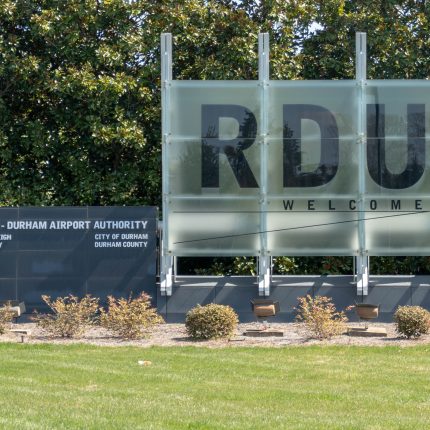In this episode of Carolina Newsmakers, host Don Curtis welcomes Michael Landguth, President and CEO of Raleigh-Durham International Airport (RDU), to discuss the rapid growth of RDU, upcoming expansion plans, and the evolving air travel industry.
Explosive Growth at RDU
RDU has experienced significant growth over the past two years. Landguth shares that the airport saw a 22% increase in passenger volume in 2023, followed by another 5% increase in 2024. This means that in just two years, RDU has grown by more than 25%, breaking previous records with 15.5 million passengers in 2024.
The airport has also expanded its destinations. Just six months ago, RDU had 70 destinations and 17 airlines. Now, it has 79 destinations and 19 airlines. New nonstop routes include Calgary, Bermuda, Punta Cana, Vancouver, Memphis, Pensacola, Nassau, Grand Rapids, and Wilmington, Delaware. These additions reflect the growing demand for both domestic and international travel options.
The Impact of Federal Budget Cuts on Air Travel
Landguth addresses concerns about potential cuts in federal funding for air traffic control. So far, there has been no indication that RDU’s air traffic controller staffing will be reduced. However, recruitment for controllers remains a nationwide challenge. He emphasizes that maintaining strong air traffic control is essential for ensuring flight safety.
The New Runway Project
One of RDU’s biggest upcoming projects is the construction of a new 10,600-foot runway, replacing the existing 10,000-foot runway, which has been in use since 1985. The new runway will allow for more long-haul international flights and is expected to be completed by 2029. Once operational, the old runway will be converted into a taxiway, making room for further terminal expansion.
Parking Expansion and Customer Convenience
With more passengers using RDU, parking demand has increased. The airport is expanding its economy parking lots by 7,000 spaces and implementing a new online reservation system for better efficiency. A parking guidance system will also be introduced, allowing travelers to find available spaces more easily.
Landguth highlights that RDU is focused on creating a seamless travel experience, from parking to check-in to boarding. The airport is exploring biometric technology and facial recognition to streamline passenger flow.
Airlines, Competition, and the Future of Air Travel
Landguth discusses changes in the airline industry, including new budget carriers such as Breeze, Avelo, Spirit, and Frontier, which have introduced more affordable flight options. He also mentions the rising cost of aircraft, with new planes costing upwards of $100 million. Airlines are looking for ways to improve fuel efficiency, and many are shifting toward larger aircraft to accommodate more passengers.
Another challenge for airlines is workforce retention, particularly among pilots and flight attendants. As more baby boomers retire, airlines must attract and train new employees to meet growing demand.
North Carolina’s Role in the Future of Aviation
Landguth expresses excitement about the upcoming construction of supersonic jets in Greensboro. This initiative could revolutionize air travel by significantly reducing flight times. For example, a trip from North Carolina to London could take just three hours instead of eight.
Dining and Shopping Enhancements at RDU
The airport is revamping its dining and retail options. Local businesses, including award-winning chef Scott Crawford’s restaurant and Black & White Roasters coffee shop, have already set up at RDU. National brands like Dunkin’ Donuts, Bobby Flay’s restaurants, and Guy Fieri’s eateries are also being introduced. Additionally, RDU is upgrading restroom facilities to improve the overall passenger experience.
The Future of Business and Leisure Travel
Landguth notes that the balance between business and leisure travel has shifted. Before the pandemic, business travel made up about 65% of RDU’s passenger volume. Now, it’s closer to 40%, with leisure travel taking the lead. He also points out the growing trend of “bleisure” travel, where professionals combine business trips with extended personal vacations.
Conclusion
With record-breaking growth, major expansion projects, and new destinations, RDU is positioning itself as a key player in the future of North Carolina’s transportation infrastructure. Landguth emphasizes that the airport’s goal is to provide a seamless and enjoyable travel experience while supporting the state’s economic growth.





